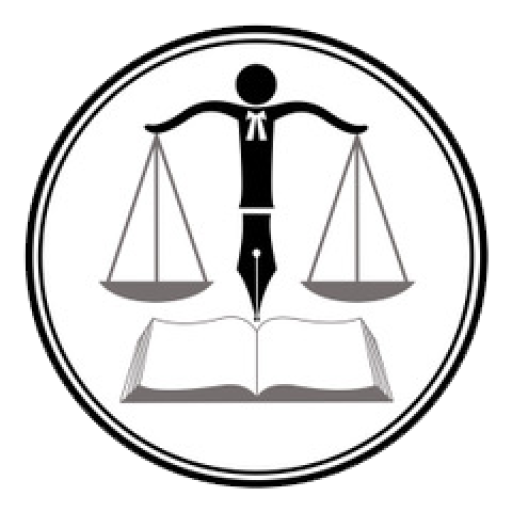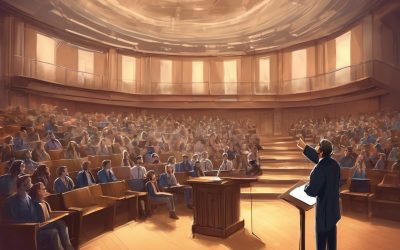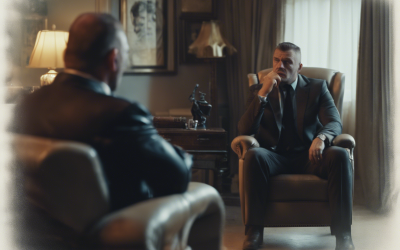[2] This appeal asks when a superior court judge can order a judge-alone trial for a murder charge, despite the prosecution’s refusal to consent under s. 473(1).
[3] The appellant, Pascal Varennes, was charged with the second degree murder of his spouse. His trial was scheduled for September 2020, during the COVID19 pandemic. In June 2020, he requested a judge-alone trial under s. 473(1). He argued, among other reasons, that pandemic-related delays to jury trials risked breaching his right to be tried within a reasonable time under s. 11(b) of the Canadian Charter of Rights and Freedoms.
[5] The appellant filed a motion seeking an order to proceed by judge alone. Concerned that pandemic-related restrictions would likely delay the trial, the trial judge found that the Crown’s refusal to consent was [TRANSLATION] “unfair or unreasonable in the circumstances” and ordered a judge-alone trial (2020 QCCS 2734, at para. 50). After trial, she acquitted the appellant of second degree murder and convicted him of manslaughter.
[7] ….On the second issue, I conclude the Court of Appeal erred by requiring proof of an abuse of process.
[8] Our law recognizes two distinct paths for superior courts to review decisions taken by prosecutors, such as a refusal to consent under s. 473(1). First, superior courts have inherent jurisdiction, including to review core prosecutorial discretion for abuse of process and other prosecutorial decisions on a lower standard. Second, superior courts may order an “appropriate and just” remedy for a rights violation pursuant to s. 24(1) of the Charter, including in anticipation of probable future breaches. Such s. 24(1) remedies can have the effect of overriding a prosecutor’s decision.
[9] Either legal framework — inherent jurisdiction or s. 24(1) — could empower a superior court to order a judge-alone trial for an offence listed under s. 469. The Court of Appeal focused on whether inherent jurisdiction applied in this case, but did not consider s. 24(1) as a separate font of jurisdiction.
[10] Like the trial judge, I conclude that the Crown’s decision whether to consent to a judge-alone trial is not a decision engaging core prosecutorial discretion, and so could be reviewed by the trial judge under her inherent jurisdiction on a standard lower than abuse of process. I also conclude that the trial judge found that proceeding with a jury trial would likely lead to unreasonable delay, and so had jurisdiction to grant her order as a Charter remedy.
[11] Reading the trial judge’s reasons as a whole, I would review her decision as an application of remedial jurisdiction under s. 24(1). The trial judge found as fact that without intervention, the appellant’s Charter rights were at substantial risk. Given the pandemic emergency, she concluded that proceeding with a jury trial would likely breach the appellant’s right to be tried within a reasonable time, and so violate s. 11(b)….
….Public health restrictions prevented large gatherings, to limit the grave risk of infection. Yet the jury selection process necessarily required gathering hundreds of people together indoors. Even if a jury could be selected, any infection amongst the jurors could derail the trial. With a second wave of infections approaching, there was sound reason to believe that a jury trial would not proceed in fall 2020, and for an indeterminate period thereafter. In this extraordinary situation, the trial judge’s findings of fact established an anticipated breach of s. 11(b) of the Charter.
[13] By ordering a judge-alone trial, the trial judge prevented a probable s. 11(b) breach and avoided a stay of proceedings, thus protecting the appellant’s rights while also respecting the Crown’s decision to prosecute the charge on its merits. Based on her findings of fact, I conclude that the order for a judge-alone trial was an appropriate and just s. 24(1) remedy. The Court of Appeal erred in ordering a new trial. I would allow the appeal.
[19] The appellant filed a motion seeking an order for a trial by judge alone on July 14, 2020 (A.R., vol. II, at pp. 2-8: [TRANSLATION] “Motion for a trial by judge alone (section 473 of the Criminal Code and sections 7, 11(b) and 24(1) of the Canadian Charter of Rights and Freedoms)”). The prosecution responded to the motion by repeating its refusal to consent.
A. Superior Court of Quebec, 2020 QCCS 2734 (Mandeville J.): Judgment on the Accused’s Motion for a Trial by Judge Alone
[20] The trial judge allowed the motion for a trial by judge alone. She held that the prosecution’s decision to refuse consent to a trial by judge alone does not fall within the category of prosecutorial discretion reviewable only for abuse of process but is, rather, [TRANSLATION] “a tactical decision” (para. 51). She concluded that the prosecutor’s decision was “unfair or unreasonable in the circumstances”.
IV. Issues
2. Was the trial judge entitled to order a judge-alone trial?
B. The Trial Judge Had Jurisdiction To Order a Judge-Alone Trial
[37] Under ss. 471 and 473 of the Criminal Code, all trials for offences listed in s. 469, including murder, must take place in a superior court before a judge and jury, unless the accused and Attorney General consent to a trial by judge alone. Section 473(1) states:
473 (1) Notwithstanding anything in this Act, an accused charged with an offence listed in section 469 may, with the consent of the accused and the Attorney General, be tried without a jury by a judge of a superior court of criminal jurisdiction.
[38] The key question in this appeal is: on what basis can a superior court judge order a judge-alone trial for an offence listed in s. 469, notwithstanding the Attorney General’s refusal to consent?2
[39] There are two recognized routes through which a trial judge can override a prosecutorial decision. First, superior courts have inherent jurisdiction to “control the process of the court, prevent abuses of process, and ensure the machinery of the court functions in an orderly and effective manner” (R. v. Cunningham, 2010 SCC 10, [2010] 1 S.C.R. 331, at para. 18; see also R. v. Kahsai, 2023 SCC 20, at para. 36). Courts have inherent jurisdiction to review any prosecutorial decision for abuse of process. For decisions falling outside the core of prosecutorial discretion, a court may be able to review on a wider basis (R. v. Anderson, 2014 SCC 41, [2014] 2 S.C.R. 167, at para. 36). Second, judges have a constitutional duty to grant meaningful remedies in response to the violation of Charter rights. Courts can always review a prosecutor’s decision for compliance with the Charter Anderson, at para. 45). Either framework — inherent jurisdiction or Charter — could allow a superior court to order a judge-alone trial in the circumstances of a given case (see, e.g., R. v. McGregor (1999), 43 O.R. (3d) 455 (C.A.)).
[40] My analysis continues as follows. First, I shall explain why the Attorney General’s decision under s. 473(1) of the Criminal Code is not core prosecutorial discretion and therefore could be reviewed under a superior court’s inherent jurisdiction on a standard less than abuse of process. Second, I shall address how the Crown’s refusal to consent to a judge-alone trial can be overridden by a court using the framework for ordering remedies under s. 24(1) of the Charter in anticipation of a rights violation. I end by applying that framework to the factual findings made by the trial judge.
(1) A Decision Under Section 473(1) Does Not Involve Core Prosecutorial Discretion
(a) The Constitutional Role of the Attorney General
[42] The doctrine of core prosecutorial discretion derives from the Attorney General’s constitutional role as Chief Law Officer of the Crown (Krieger v. Law Society of Alberta, 2002 SCC 65, [2002] 3 S.C.R. 372, at para. 45; Ontario v. Criminal Lawyers’ Association of Ontario, 2013 SCC 43, [2013] 3 S.C.R. 3, at para. 34). The Attorney General has exclusive constitutional responsibility to determine whether to bring the weight of the state to bear in criminal prosecutions and is the “first representative of the Sovereign in the courts, in whose name nearly all criminal proceedings are conducted” (J. L. J. Edwards, The Law Officers of the Crown (1964), at p. 2; see also Wilkes v. The King (1768), Wilm. 322, 97 E.R. 123; Krieger, at para. 24; R. v. Power, [1994] 1 S.C.R. 601, at pp. 621-23).
[44] The Attorneys General exercise their constitutional Chief Law Officer function independently of partisan considerations and make prosecutorial decisions without interference from their cabinet colleagues (see generally Krieger, at para. 30; Miazga v. Kvello Estate, 2009 SCC 51, [2009] 3 S.C.R. 339, at para. 47). Individual Crown prosecutors must also consider the broader public interest throughout the conduct of criminal proceedings (R. v. Thursfield (1838), 8 Car. & P. 269, 173 E.R. 490; R. v. Puddick (1865), 4 F. & F. 497, 176 E.R. 662). In Canada, Rand J. famously explained the Crown’s responsibilities in Boucher v. The Queen, [1955] S.C.R. 16, at pp. 23-24:
It cannot be over-emphasized that the purpose of a criminal prosecution is not to obtain a conviction, it is to lay before a jury what the Crown considers to be credible evidence relevant to what is alleged to be a crime. Counsel have a duty to see that all available legal proof of the facts is presented: it should be done firmly and pressed to its legitimate strength but it must also be done fairly. The role of prosecutor excludes any notion of winning or losing; his function is a matter of public duty than which in civil life there can be none charged with greater personal responsibility. It is to be efficiently performed with an ingrained sense of the dignity, the seriousness and the justness of judicial proceedings.
[45] When a prosecutor exercises discretion, they are presumed to do so in good faith, consistent with their Boucher responsibilities (Application under s. 83.28 of the Criminal Code (Re), 2004 SCC 42, [2004] 2 S.C.R. 248, at para. 95). To respect the separation of powers and prerogatives of the Attorney General, courts must adopt a posture of deference whenever reviewing a decision by a prosecutor or considering making an order that would have the effect of overriding a prosecutor’s decision.
(b) Core Prosecutorial Discretion
[46] ….These decisions lie within the inherent prosecutorial jurisdiction of the Attorney General and go to “the nature and extent” of the prosecution of criminal offences that come before the judge (Krieger, at para. 47). These decisions constitute “core prosecutorial discretion”.
[47] The use of the word “core” to qualify prosecutorial discretion does not imply that this is a narrow category Anderson, at para. 41). Rather, core prosecutorial discretion encompasses prosecutorial decisions derived from the core constitutional authority inherent to the Attorney General (Krieger, at paras. 43 and 49). Anderson confirmed Krieger and the criteria that applied to such discretion. Although Anderson suggested that the use of the word “core” had caused some confusion, in my view it helpfully distinguishes discretionary decisions that engage the inherent jurisdiction of the Chief Law Officer from other discretionary decisions that prosecutors make in the conduct of proceedings. Indeed, this Court has continued to refer to “core prosecutorial discretion” since Anderson….
…. Parliament has codified some core prosecutorial decisions in statute (Anderson, at para. 44). But what qualifies these decisions as core prosecutorial discretion is not their statutory nature, but their connection to the Attorney General’s inherent constitutional function.[Emphasis by PJM]
[48] In Krieger, this Court wrote that what unites instances of core prosecutorial discretion “is that they involve the ultimate decisions as to whether a prosecution should be brought, continued or ceased, and what the prosecution ought to be for” (para. 47 (emphasis in original); see also R. v. Nixon, 2011 SCC 34, [2011] 2 S.C.R. 566, at para. 30). Both Krieger and Anderson note that core prosecutorial discretionary decisions impact the “nature and extent” of the criminal proceedings. They confirm that such decisions do not encompass those that impact how the proceedings will be conducted (see, e.g., Anderson, at para. 60, citing R. v. Auclair, 2014 SCC 6, [2014] 1 S.C.R. 83). Rather, they involve decisions that fall outside the judiciary’s role in adjudicating matters on their merits. Anderson provides a list of examples of core prosecutorial discretion: whether to repudiate a plea agreement, to pursue a dangerous offender application, to prefer a direct indictment, to charge multiple offences, to negotiate a plea, to proceed summarily or by indictment, and to initiate an appeal (para. 44). Anderson also determined that a decision on whether to provide a notice that would increase penal jeopardy is an instance of core prosecutorial discretion (para. 63).[Emphasis by PJM]
[49] What is common to these examples is that they directly impact the nature and extent of the criminal jeopardy to which the accused will be subjected. These decisions are within the core constitutional jurisdiction of the Attorney General acting as the Chief Law Officer. Judicial deference to these decisions therefore respects the separation of powers and the constitutional role of the Attorney General (Krieger, at paras. 45-46). It also has the effect of serving the public good (Miazga, at para. 47).
[50] While core prosecutorial discretion demands strong deference, it does not demand absolute immunity from review.
[52] The abuse of process doctrine reflects the necessarily high threshold for the judiciary to invoke its inherent jurisdiction and intrude on the Attorney General’s core prosecutorial discretion.
[53] The doctrine of abuse of process applies in various fields of law and “engages the inherent power of the court to prevent misuse of its proceedings in a way that would be manifestly unfair to a party or would in some way bring the administration of justice into disrepute” (Saskatchewan (Environment) v. Métis Nation – Saskatchewan, 2025 SCC 4, at paras. 33-36). Courts must remedy an abuse of process because to allow trials to proceed in such circumstances “would tarnish the integrity of the court” (R. v. Conway, [1989] 1 S.C.R. 1659, at p. 1667).
[54] In the criminal law context, abuse of process targets egregious conduct that threatens an accused’s right to a fair trial or undermines the integrity of the justice system (R. v. Brunelle, 2024 SCC 3, at para. 27; R. v. Babos, 2014 SCC 16, [2014] 1 S.C.R. 309, at para. 31). This Court has called the threshold for finding an abuse of process in a criminal case “notoriously high” and stated that “successful reliance upon the doctrine will be extremely rare” (Nur, at para. 94; R. v. Mahalingan, 2008 SCC 63, [2008] 3 S.C.R. 316, at para. 42). That said, abuse of process can exist even absent prosecutorial misconduct. I agree with the intervener the Attorney General of Ontario that this Court has recognized abuses of process in situations of both improper intent and abusive effects (I.F., at paras. 12-13; see also R. v. Keyowski, [1988] 1 S.C.R. 657; Babos, at para. 37).[Emphasis by PJM]
[55] In sum, where the Attorneys General or their agents make decisions that directly affect the nature and extent of the criminal jeopardy a person may face, these constitute decisions of core prosecutorial discretion and a court may not interfere under its inherent jurisdiction except to remedy an abuse of process.
[56] In addition to decisions directly affecting the jeopardy of an accused, prosecutors make a wide variety of discretionary decisions every day that do not fall within core prosecutorial discretion. Krieger and Anderson recognized that prosecutors make decisions relating to “tactics or conduct before the court”, which cover a wide range of decisions within the proceedings, including which charges to prioritize for limited court dates, what witnesses to call, what questions to ask, and how to present an opening or closing address — decisions that do not directly change the criminal jeopardy an accused may face (Krieger, at para. 47; Anderson, at paras. 57-61; see also R. v. Jolivet, 2000 SCC 29, [2000] 1 S.C.R. 751, at paras. 14 and 21). The term “tactics” does not mean that these discretionary decisions are unimportant. Rather, Krieger and Anderson used “tactics or conduct before the court” to reflect that these discretionary decisions do not attract the same separation of powers imperative as core prosecutorial discretion, since they do not tread on the core of the constitutional role of the Chief Law Officer.
[57]….Because these noncore decisions cover a broad range — from the everyday issues that form part of a litigant’s conduct of a trial to decisions authorized under statute — the standard for a judge to override a Crown decision will vary with the circumstances. The precise standard in a given case will depend on the nature of the Crown conduct, the presence or absence of statutory authority, the impact on trial fairness, and any other relevant interest (see, e.g., R. v. Cook, [1997] 1 S.C.R. 1113, at paras. 61-62; R. v. Samaniego, 2022 SCC 9, [2022] 1 S.C.R. 71, at paras. 19-26; R. v. S.G.T., 2010 SCC 20, [2010] 1 S.C.R. 688, at paras. 36-37). As I shall explain, the fact that a non-core prosecutorial decision is made pursuant to statutory authority will require that deference feature prominently in the analysis.
(c) A Decision Under Section 473(1) of the Criminal Code Does Not Fall Within Core Prosecutorial Discretion
[60] With respect, I disagree. A decision under s. 473(1) affects the identity of the fact finder and the mode of trial. It does not impact the nature and extent of the criminal jeopardy facing the accused. It relates to how the proceedings will be conducted and not to whether a prosecution will be brought, or what the prosecution will be for. While the jury system is obviously a key feature of our criminal justice system, a trial by judge alone or a trial by judge and jury are two comparable routes to a fair trial of the charges laid by the prosecutor. As such, the Attorney General’s decision under s. 473(1) does not engage their core, inherent constitutional role as Chief Law Officer of the Crown.
[61] ….Courts must be respectful of Parliament’s legislative decision, made pursuant to its constitutional authority, to vest these responsibilities in prosecutors and the accused rather than the courts.
[62] This said, courts have a constitutional duty to review the executive’s exercise of delegated authority for legality and compliance with the Constitution (Immeubles Port Louis Ltée v. Lafontaine (Village), [1991] 1 S.C.R. 326, at p. 360; Roncarelli v. Duplessis, [1959] S.C.R. 121, at p. 140). Further, statutes cannot abrogate the inherent jurisdiction of a superior court, which includes jurisdiction to ensure that trials operate fairly and efficiently (Reference re Code of Civil Procedure (Que.), art. 35, 2021 SCC 27, [2021] 2 S.C.R. 291, at paras. 65 and 68, per Côté and Martin JJ., at paras. 232 and 234, per Wagner C.J., and at para. 301, per Abella J.). At a minimum, courts can still review decisions taken by prosecutors under delegated statutory authority for abuse of process.
[64] I need not decide what precise standard would be required for a court to review, under inherent jurisdiction, such a non-core prosecutorial decision made pursuant to statute, in the absence of full argument from the parties, given that the remedial jurisdiction under the Charter also applies in this case.
[65] In addition to inherent jurisdiction, the appellant invoked s. 24(1) of the Charter in his motion. The trial judge’s reasons for ordering a judge-alone trial related primarily to the risk of unreasonable delay.
[66] Delay that does not constitute an abuse of process can still violate s. 11(b) of the Charter. A trial judge’s discretion to remedy unreasonable delay under s. 24(1) of the Charter is therefore broader than it is under inherent jurisdiction (see generally R. v. Rahey, [1987] 1 S.C.R. 588, at pp. 635-36, per La Forest J.; Law Society of Saskatchewan v. Abrametz, 2022 SCC 29, [2022] 2 S.C.R. 220, at paras. 45-49). I thus turn now to the framework for a trial judge’s remedial jurisdiction under s. 24(1) of the Charter.
(2) Remedial Jurisdiction Under Section 24(1) of the Charter
(a) Threshold: Proof of Breach
[69] To obtain relief under s. 24(1), a claimant must first prove a Charter violation on the balance of probabilities (Khadr, at para. 21).
[70] Section 24(1) remedies are available in anticipation of a probable future Charter infringement (Operation Dismantle Inc. v. The Queen, [1985] 1 S.C.R. 441, at p. 450; New Brunswick (Minister of Health and Community Services) v. G. (J.), [1999] 3 S.C.R. 46, at paras. 50-51).
[72] Instead, before ordering a s. 24(1) remedy, this Court’s decisions require “proof of ‘probable future harm’” (G. (J.), at para. 51, quoting Operation Dismantle, at p. 458; United States of America v. Kwok, 2001 SCC 18, [2001] 1 S.C.R. 532, at para. 66). There is only one standard of proof for establishing prior, ongoing, and future Charter breaches: the balance of probabilities.
[73] There is no right under the Charter to a judge-alone trial (R. v. Turpin, [1989] 1 S.C.R. 1296). But the Crown’s insistence on a jury trial may engage an accused’s Charter rights in the specific circumstances of a case. Here, the appellant alleged that the Crown’s failure to consent under s. 473(1) would violate his rights under ss. 7 and 11(b) of the Charter. He was therefore required to prove, as a threshold, that without intervention he would likely suffer an infringement of one or both rights.
(b) Remedy: “Appropriate and Just in the Circumstances”
[76] An appropriate and just remedy will: (i) vindicate the claimant’s rights and freedoms; (ii) ensure future state compliance with the Charter; and (iii) compensate the claimant for the loss caused by any infringements (Doucet-Boudreau, at para. 55; Vancouver (City) v. Ward, 2010 SCC 27, [2010] 2 S.C.R. 28, at paras. 25-29).
[77] The court must also consider whether countervailing factors make a specific remedy inappropriate in the circumstances. A s. 24(1) remedy should also: (i) respect the separation of powers; (ii) avoid imposing substantial hardships or burdens on the government; and (iii) avoid negatively impacting good governance (Ward, at paras. 38-44; Power (2024), at paras. 82-83; Doucet-Boudreau, at para. 58).
[81] ….Courts should thus be wary not to manage the conduct of a prosecution through s. 24(1), but to instead grant carefully tailored remedies that respond to the rights infringement without unduly upsetting the prosecutorial role of the Attorney General. However, the separation of powers does not imply a hierarchy, or demand immunity from judicial review. The judiciary is itself a branch of state, and the executive must yield to a court’s constitutional duty to protect the rights and freedoms of Canadians through meaningful remedies (Power (2024), at paras. 83 and 95; Khadr, at para. 36-37).
[86] It may be appropriate and just for a court to make an order under s. 24(1) that affects an exercise of core prosecutorial discretion, even absent an abuse of process. As our Court said in Jordan, “Crown counsel must be alive to the fact that any delay resulting from their prosecutorial discretion must conform to the accused’s s. 11(b) right” (para. 79; see also para. 138; R. v. Vassell, 2016 SCC 26, [2016] 1 S.C.R. 625, at para. 5; R. v. K.J.M., 2019 SCC 55, [2019] 4 S.C.R. 39, at para. 110; R. v. Thanabalasingham, 2020 SCC 18, [2020] 2 S.C.R. 413, at para. 5).
(c) Application to This Case
[88] This was not a typical s. 11(b) motion. The parties did not make submissions characterizing periods of delay between the laying of the charge and the anticipated end of the trial. However, the appellant argued at all levels of court for a judge-alone trial given the risk of unreasonable and indefinite delay. As I shall now explain, in the extraordinary circumstances of this case, where the trial judge was faced with a potentially indeterminate period of delay due to the pandemic, she was entitled under Jordan to conclude that without intervention the appellant’s s. 11(b) right to a trial within a reasonable time would probably be violated.
[89] I accept the trial judge’s factual findings, as well as her conclusions regarding an anticipated s. 11(b) breach, and would uphold her order….
[90] For the following reasons, the trial judge concluded that proceeding with a jury trial would likely prejudice the appellant’s Charter rights:
(i) The greater likelihood of infection with a jury of 12 to 14 people created a substantial risk (“risques substantiels”) of a suspension or delay of the trial. [TRANSLATION] “If counsel, the accused or the judge became infected or had to quarantine, this would necessarily result in either a significant suspension of the trial or even a mistrial” (motion decision, at para. 90).
(ii) Given the many uncertainties due to the pandemic, a jury trial would be more risky, time-consuming, and require more resources than proceeding by judge alone (para. 88). [TRANSLATION] “In the circumstances of the pandemic, which makes it difficult to hold an efficient and safe trial and which weakens the chances of the trial being completed within a reasonable time, the holding of a trial by judge alone is easily justified” (para. 87).
(iii) The risk to the appellant’s s. 7 right to make full answer and defence would be exacerbated by a jury trial, given the long commute to trial (an estimated total of four to six hours per day for over three weeks), which limited his ability to consult with counsel and prepare his defence (paras. 57-58, 79 and 105).
[91] The trial judge concluded that [TRANSLATION] “[t]he Prosecutor’s position is irreconcilable with her obligation to ensure that the trial is fair and that it is completed within a reasonable time” (motion decision, at para. 89). While the trial judge did not make a finding that the appellant’s s. 7 right to make full answer and defence would likely be breached, she was entitled to take any impact on that right into consideration in fashioning an appropriate and just remedy.
[95] The trial judge made her decision at the height of the pandemic, before a vaccine. Her findings of fact were grounded in the record as it existed in the profound uncertainty of summer 2020, and display no legal errors. The trial judge was also best equipped to determine whether the Crown had taken reasonable steps in response to an exceptional circumstance (Jordan, at para. 79).
[105] Ordering a judge-alone trial was a tailored remedy, using “a scalpel instead of an axe”, to prevent a breach while doing as little harm to other public interests as possible (O’Connor, at para. 69).
[107] Accordingly, based on her findings, I would affirm the trial judge’s order for a judge-alone trial. The Court of Appeal erred in holding that the trial judge made this order without jurisdiction.
VI. Conclusion
[108] I would allow the appeal and quash the order for a new trial.






